The village of Rychnov nad Malší lies about 2.5 km northeast of Dolní Dvořiště in the Český Krumlov district at an altitude of 575 m. Its history dates back to the 14th century. The most famous monument is the Church of St. Andrew. This originally Gothic building was rebuilt at the beginning of the 18th century.
Things to Do Nearby
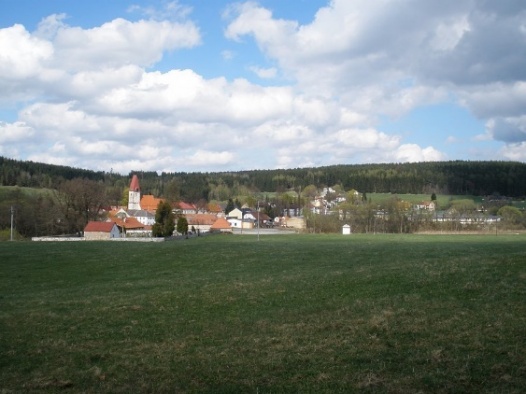
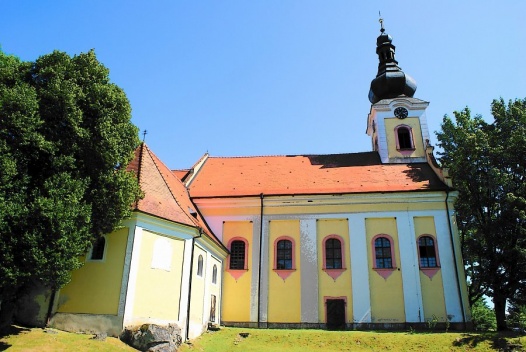
The South Bohemian Svatý Kámen is a remarkable pilgrimage site, which could easily be called the border "end of the world". That is, if we consider the area near Rychnov nad Malší and Dolní Dvořiště to be the end of the world. Nowadays, regular pilgrimage masses are held here every first Saturday of the month, except for August, when the main mass is held here, and the most important feasts. Most of them are still read in German. And right at the outset, we should disclose that the origins of this pilgrimage site date back to the early 16th century, when the first legend of the splitting and disintegrating boulder appeared. According to this legend, sometime around 1500, the Virgin Mary appeared to the local shepherds on the boulders with singing angels, and then they split the large boulder into two parts, which are constantly moving away from each other. And when the space between the boulders is so large that a hay wagon can pass through it, the world will end. However, there is also a lesser known version, according to which the stones are moving closer together, and the end of the world will come when they are reunited.
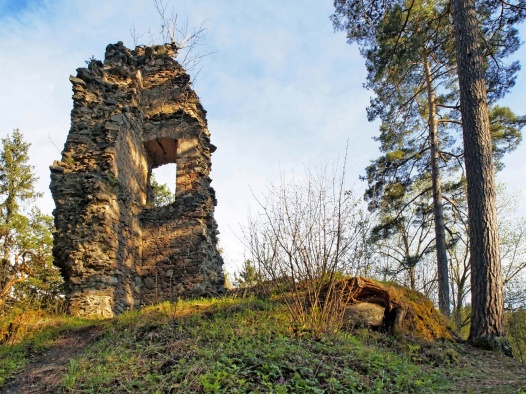
The ruins of Louzek Castle are located near Kaplice in South Bohemia. You will find it on a rocky promontory above the river Malší in romantic surroundings of meadows and forests. Louzek Castle was built at the turn of the 13th and 14th century. The purpose of the castle was to protect the old trade route leading from Budějovice to Austria.
The founder of the castle is still unknown. The owners from the 15th century are documented - at that time the castle belonged to the Malovec family, later it became the property of the Rožmberk family. The Rožmberks annexed Louzek to their estate of Nové Hradů and so Louzek remained unnecessary, a century later it is already listed as an abandoned ruin.
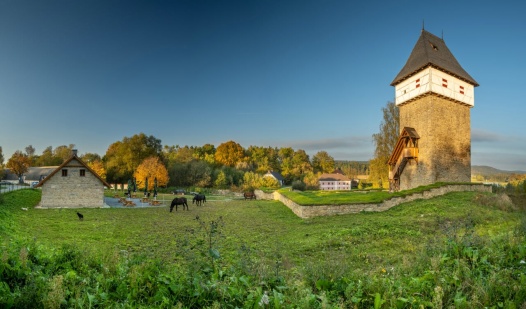
The newly reconstructed tower of the fortress in Tichá is 28 metres high and is also the southernmost castle lookout tower in the Czech Republic. It offers really beautiful views, especially of Šumava and the Novohradské Mountains.
The Tichá Fortress lies about 5 km southeast of Dolní Dvořiště in the village of the same name. The fortress belonged to Velešín Castle since 1360 and in 1387 it became the property of the Rožmberks. They held the fortress and the village of the same name until the extinction of the family in 1611. At the end of the 17th and the beginning of the 18th century the fortress burnt down several times. It was always rebuilt and in 1789 converted into a brewery, which was closed down in the mid-19th century. The only surviving monument is the torso of the massive residential tower of the former fortress. The tower had a square plan with a side of nine metres. The masonry was up to two and a half metres thick in places. The remains of the tower are 12 metres high and the original entrance to the building is on the first floor. There is an entrance fee.
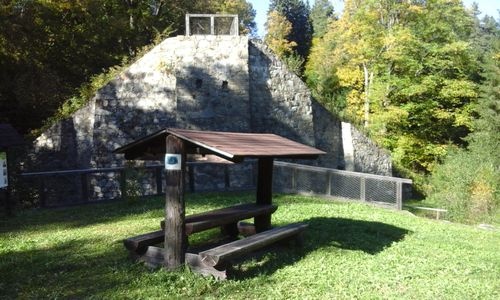
The Forestry of the Czech Republic near Dolní Dvořiště in the Český Krumlov region has completed the reconstruction of the legendary horse-drawn railway. It also serves the public as a new educational site.
The nature trail is located in the border area and follows a small part of the route of the former horse-drawn railway České Budějovice-Linec. The information panel is located at the reconstructed railway building, namely half of the bridge pillar and the massive embankment connected to it. You will also find the remains of a guard house.
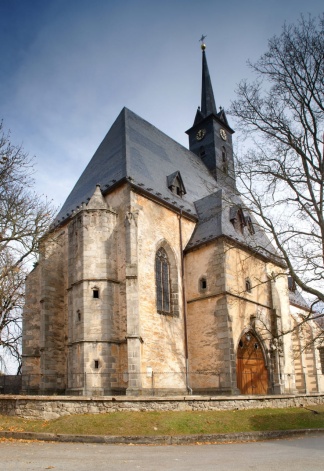
The South Bohemian village of Dolní Dvořiště, which has approximately thirteen hundred inhabitants, is "famous" mainly thanks to its border crossing to Austria.This small town of Rožmberk is located in the southern part of the Český Krumlov district, on the border of the Šumava and Novohradské hory mountains, and was first mentioned in 1279. It is therefore not so surprising that we can find some interesting monuments here that have survived the Iron Curtain period.
The most significant, but probably also the most beautiful and valuable, is the parish church of St. Jilja, located on the local square, whose construction was started at the time when the fourteenth century passed the scepter to the fifteenth century. This landmark of Dolní Dvořiště was eventually built - mainly thanks to the militant Hussites - for more than a century and today it is considered an important South Bohemian monument of the Rosenberg Late Gothic period.
Since 1958, the Church of St. Jilja has also been included in the list of cultural monuments of the Czech Republic.
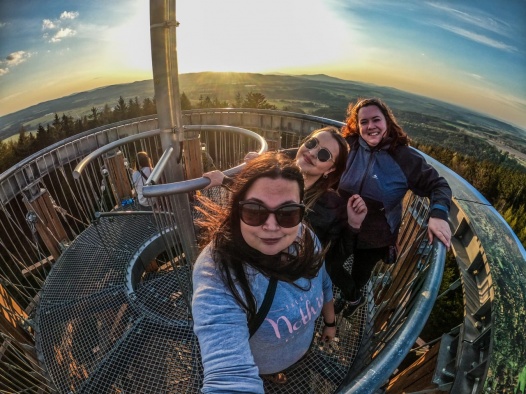
The almost 30 m high lookout tower stands on Hradiště Hill near Kaplice (774 m), a lonely hill in the Novohrad foothills about 5 km east of the South Bohemian town of Kaplice. The lookout tower was built on the hill on the place where a Celtic fortification stood two thousand years ago. The lookout tower has a wooden-steel construction.
The lookout tower Hradiště vrch is 28 m high, with 149 steps leading to the viewing platform.
From the Hradiště vrch lookout you can see Kaplice, Plechý, Vítkův kámen, Klet', Budějovice basin, Novohradské hory, and in good weather the Alps.
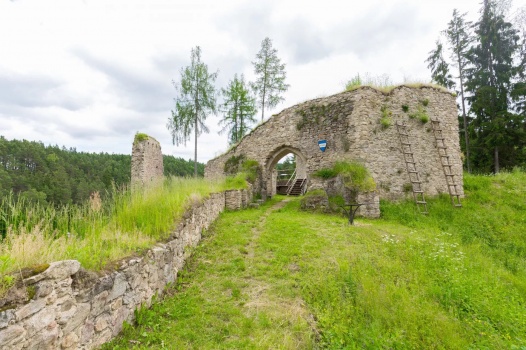
The medieval castle, standing at an altitude of 585 m above sea level on the left bank of the river Malše, had a turbulent history. It was founded by the Bavarians from Strakonice. However, in the first half of the 15th century it was acquired by the Rožmberks. The representative of this famous family, Oldřich II, had Pořešín Castle demolished so that the Hussites could not seize it. The ruins of Pořešín Castle include a medieval blacksmith's workshop. You will see what kind of traffic was here in ancient times. You will also see sheep grazing in fenced ditches. And in the tourist season, you can take part in the events that are popularly held in the place. These include various medieval battles, concerts, workshops, gastronomic events and theatres.
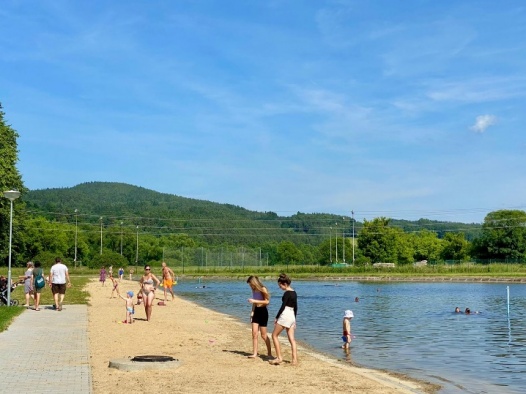
The outdoor swimming pool Kaplice offers sports activities, a pool for children, a larger pool with a slide for schoolchildren and a 200-metre long large pool for adults.
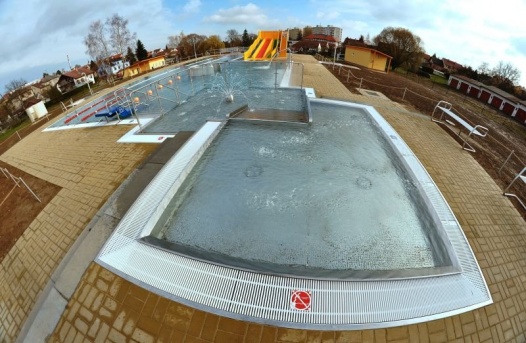
It offers a multi-purpose pool with a children's area of 250m2 and a maximum depth of 1.8 m.
There is a water hedgehog, water cannon, water spout, wall massage, bubble bench, bottom bubble or Trio Slide. You can also use the beach volleyball court and the children's playground.
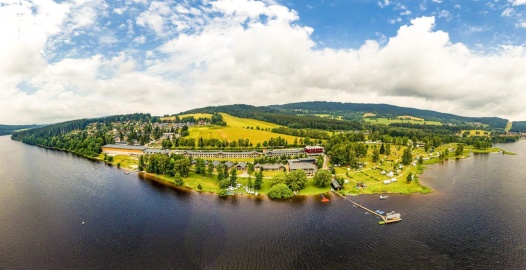
The Lipno Reservoir is the largest artificial lake in the Czech Republic. Water from the dam is directed to an underground power plant. The vast lake created behind the dam is often called the "South Bohemian Sea." It stretches 44 km in length, and at its widest point near Černá v Pošumaví, the distance between the shores reaches 10 km.
Find more information and attractions at Lipno here.
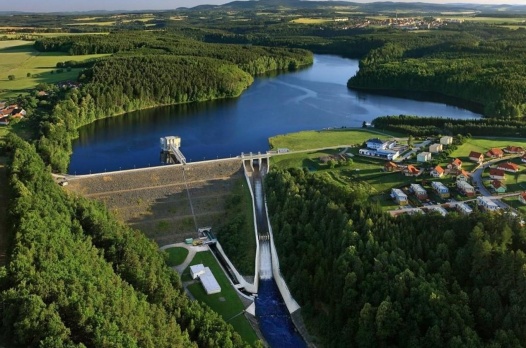
The Římov Reservoir was built between 1971 and 1978, primarily as a source of drinking water for České Budějovice and the surrounding area. It is located on the Malše River, south of the village of Římov, from which it takes its name. The reservoir is not accessible for swimming or fishing. The dam is 47.5 meters high and 290 meters long, and the water surface area of the reservoir covers 210 hectares.
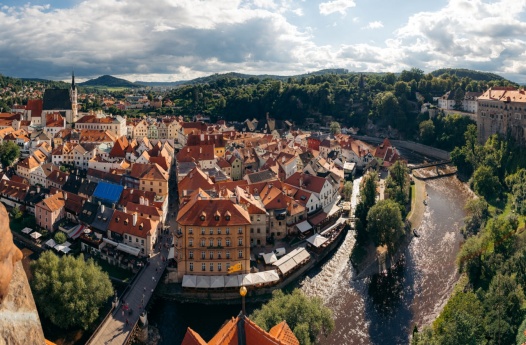
The majestic landmark of the historic town of Český Krumlov—one of the most beautiful and architecturally valuable towns in the Czech Republic, listed as a UNESCO World Heritage Site—is the impressive castle and chateau complex. (More about Český Krumlov)
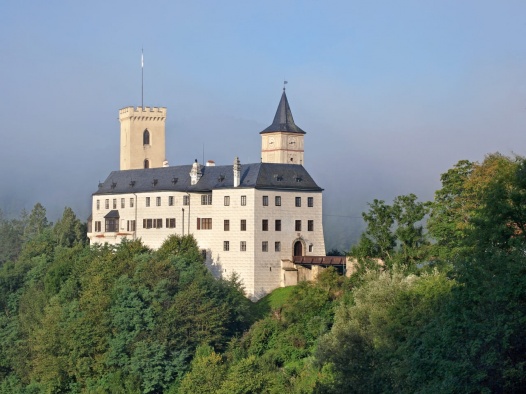
One of the oldest castles in South Bohemia, Rožmberk Castle stands on a narrow ridge above the Vltava River. Dating back to the mid-13th century, it is among the earliest castles built by the Vítkovec family.
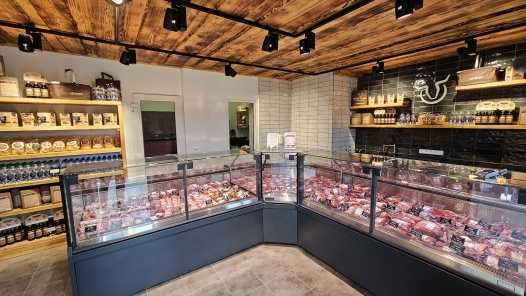
A new farm shop with organic meat has opened in Besednice. Every Wednesday to Friday from 2:00 PM to 5:00 PM, it welcomes all lovers of quality meat. You will find aged organic beef, premium farm pork, sausages, barbecue cuts, and more. Address: Besednice, Družstevní 336.
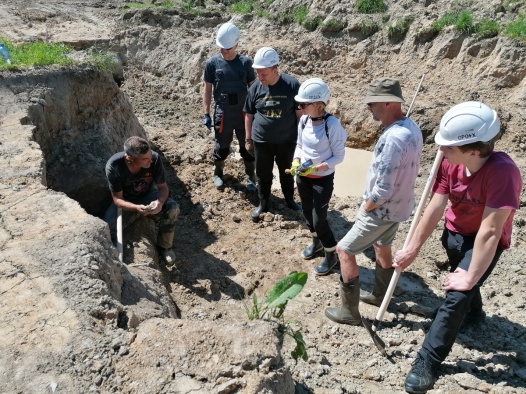
You can dig up your own Moldavite from the original geological layer, where it was deposited by natural processes 15 million years ago, at the experiential mining site in Besednice.
